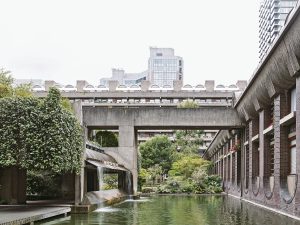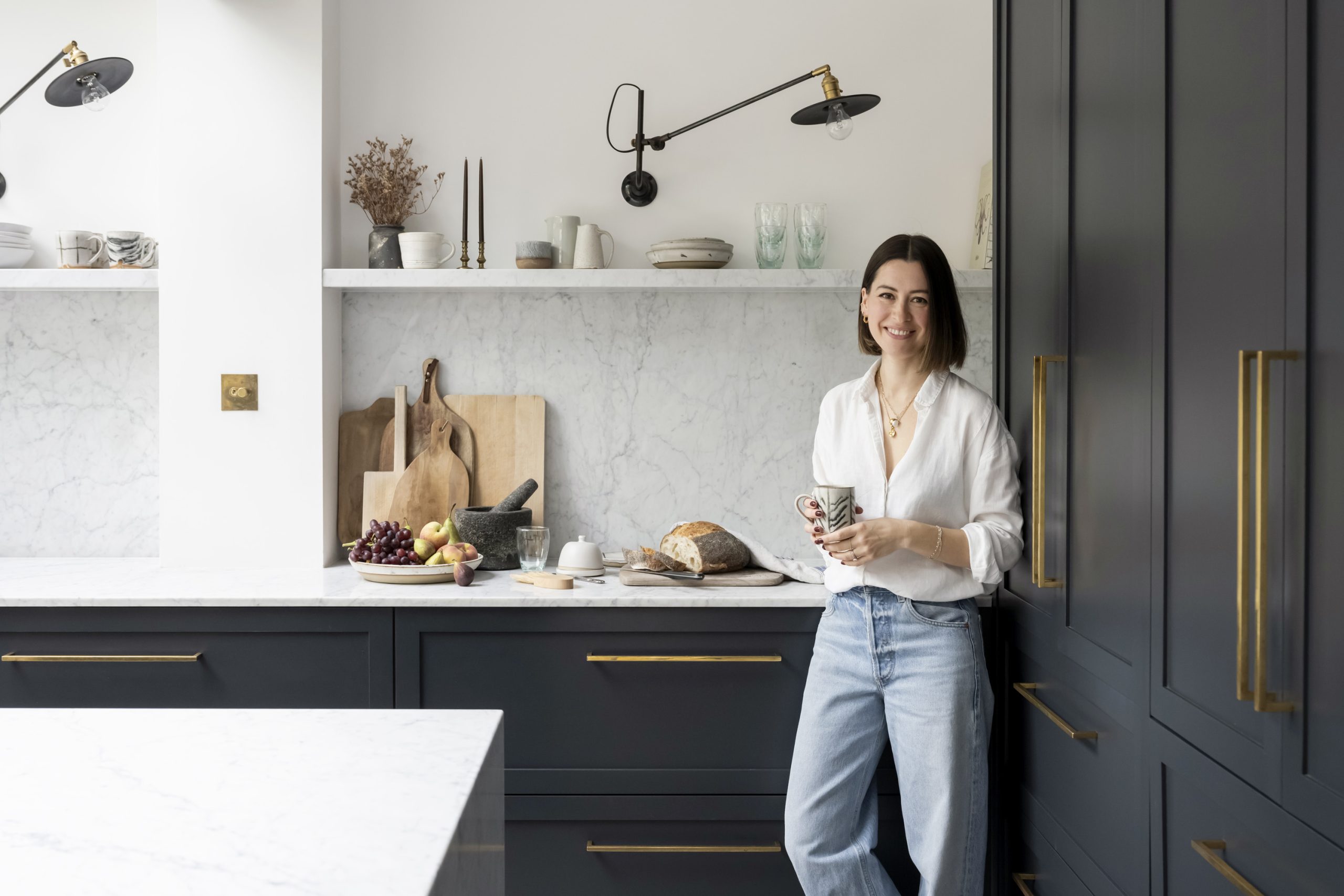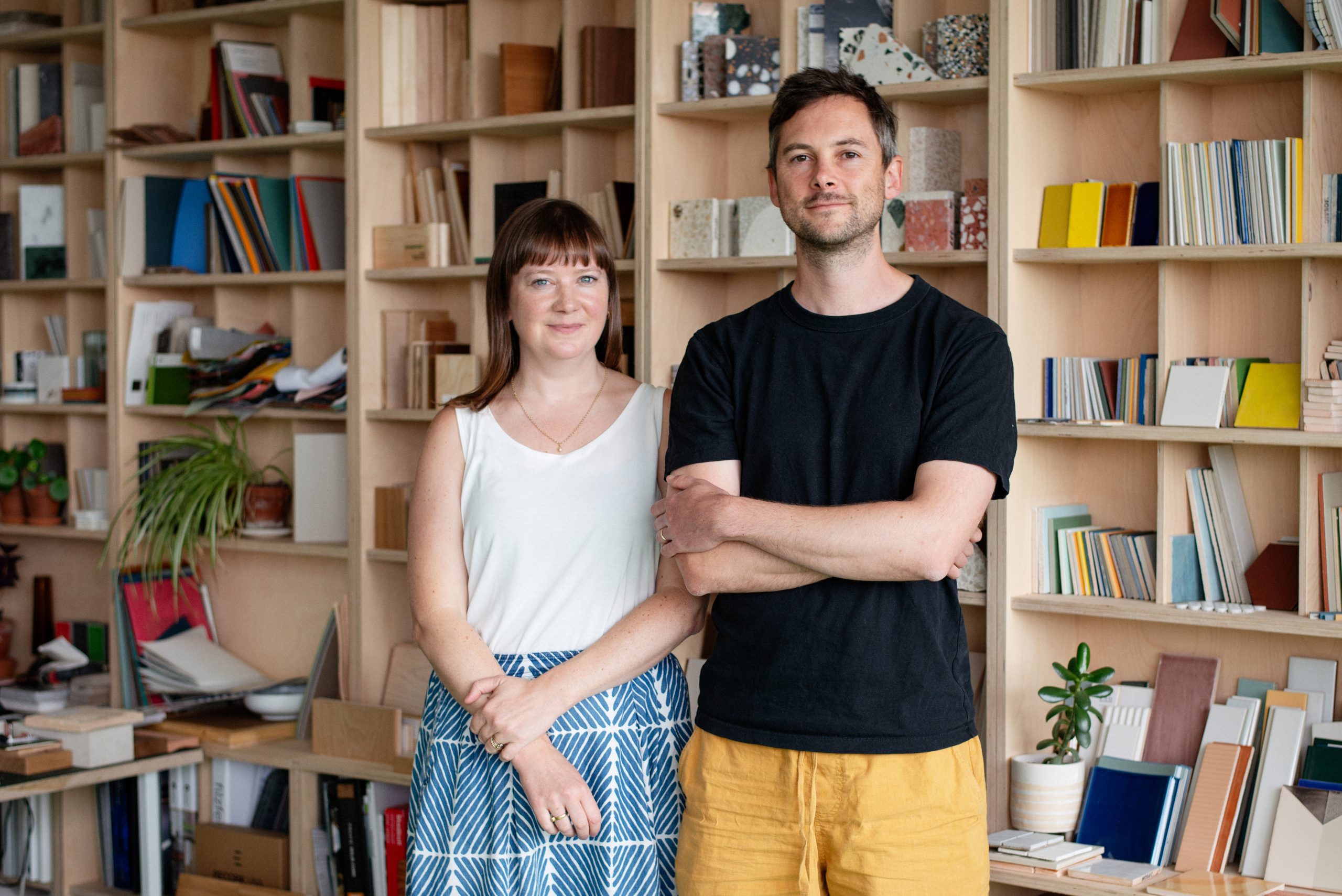Let’s be Brutal. What’s it like to live in the Barbican?
There is no one better to ask than the designer and writer Stefi Orazi, whose outstanding book, The Barbican Estate (Batsford, 2018), about living on the estate includes the mammoth achievement of including floorplans of each flat type (there are over 140) and photography of the apartments.

By Christoffer Rudquist P.13
Orazi’s book has become a must-have for lovers of modernism and Brutalist architecture since it was published to celebrate the Barbican Estates’s 50th anniversary.
Stefi Orazi worked as a graphic designer for more than a decade before starting her own design agency, working mainly in print and exhibition graphics for clients in the cultural sector. Her first book, Modernist Estates (Frances Lincoln) was published in 2015. In 2020, during lockdown, she started to write and design Perambulations — a highly collectable series of neighbourhood walking guides to modernist housing, twenty-one of which have now been published. She is best known for her Instagram account modernistestates.
Let’s begin with a very simple question; what is the Barbican?
The Barbican is a residential area in the city of London designed by Chamberlin, Powell and Bon. It’s a post-war scheme that was essentially built to bring people back into the City after the war. To the untrained eye, it can look like a council estate because of its imposing concrete structure, but, in reality, it’s an estate owned by the Corporation of London intended for middle-income residents.
It’s a unique place in terms of its size and ambition. It’s essentially twenty blocks of various heights and sizes, built on a 35-acre World War II bomb site. There are three 40-storey tower blocks, mid-rise terraces and mews townhouses. In all, there are approximately two-thousand flats, with residents’ gardens amongst them and the international Arts venue – that most people know – at its centre.

By Christoffer Rudquist p.167
Tell us about your own relationship with the place.
I first visited it when I was a student in the mid-1990’s to see an exhibition in the art gallery in the Barbican Centre. At the time I hadn’t even realised there was a huge residential element to the complex.
My first job as a designer when I graduated was working for GQ magazine and I went to visit the art director who lived there. His was a particularly spectacular home, a duplex penthouse apartment with a double-height living space. That visit had a big effect on me, so much so that I ended up living in the Barbican for nearly ten years.
This was a time, in the 1990s, when most people didn’t appreciate Brutalist architecture. The reality had been that it took three decades to build the Barbican so that by the time it was completed its architectural style was out of fashion and post-modernism was in. There were some people with a certain creative aesthetic that loved it, and then others like me who had always lived in council housing and purpose-built flats and found something about it that was familiar in terms of its clean lines and strong construction.
I became obsessed with modernist architecture after moving there and started researching other housing estates. I’m interested in the social history of architecture of that period and the fact that there was such an optimism during the post-war years to build a better future with good housing.
Is the Barbican Estate really a Brutalist version of London’s Georgian Squares?
In some ways, yes. The architects were influenced by the uniformity of Georgian terraces with garden squares at their centre. The Barbican was built for middle-class people. The Corporation of London wanted to attract a wide range of people to the estate, that’s why they built a variety of housing from studios to townhouses. Applicants had to go through a vetting process to ensure they were earning enough money to be able to live here.
To this day, on my trips there, I am struck by the audaciousness design, the build quality and how well it is maintained. The spec of the materials and attention to detail in the apartments, such as the door handles, light switches and the flush skirting boards – everything was carefully considered and delivered to a high standard, despite being done on a mass scale. Although the architecture is not that different to some post-war social housing schemes, how it is maintained sets it apart. Everything is cleaned and scrubbed daily. Each block has a car park with an attendant who also takes in parcels and that sort of thing. The service charges are expensive, and I brought this up with people I interviewed for the book, but nobody complained and that says a lot.

By Christoffer Rudquist p. 14
You’ve said you’re not an architectural historian. What is your angle?
What I’m interested in are the people and the real lived experience of the place. All buildings are built for people, and while it’s fair enough to talk about their architectural quality, I want to know how people actually live in them. That’s the position of all my books.
One of the things that motivated me to do the book was the fact that when I first moved to the Barbican in the 90s, there were almost no families and no children. I would go into the residents’ gardens and be the only person there, which was quite strange. As it is situated in the City – London’s financial district – many people who lived there chose it for its location but had somewhere in the countryside as their main home.
I wanted to write about the huge shift I witnessed in the demographic of people moving to the estate as an appreciation of the architecture – and of modernism and Brutalism in general – grew. Younger people started to move in, a lot of them creatives, and started families there.

By Christoffer Rudquist P.106
It’s really joyous to see so many children on the estate now. They help to forge the community there as they tend to form friendships with other children easily that then bring the parents into each other’s orbit.
I also spoke to the people who had first moved there in the late 1960s. It was very progressive of them. In truth, although I love that living in the Barbican today has changed and it is appreciated, I also did quite like living there when it was less popular!
Of the people I interviewed, I really liked the woman who managed the launderette, Pam. She retired a couple of years ago having been there since 1999. Because the kitchens in the flats are so compact – without the room for a washing machine – most residents went to Pam. She is a thoroughbred Eastender and her customers were middle-class people. The launderette brought people together. Everybody’s got washing — it’s quite levelling, I think. Buildings are about the people that live in them.
The best starting place to enjoy Stefi Orazi’s passion for modernist architecture in London and the people who love it is her Instagram account – modernistestates




















